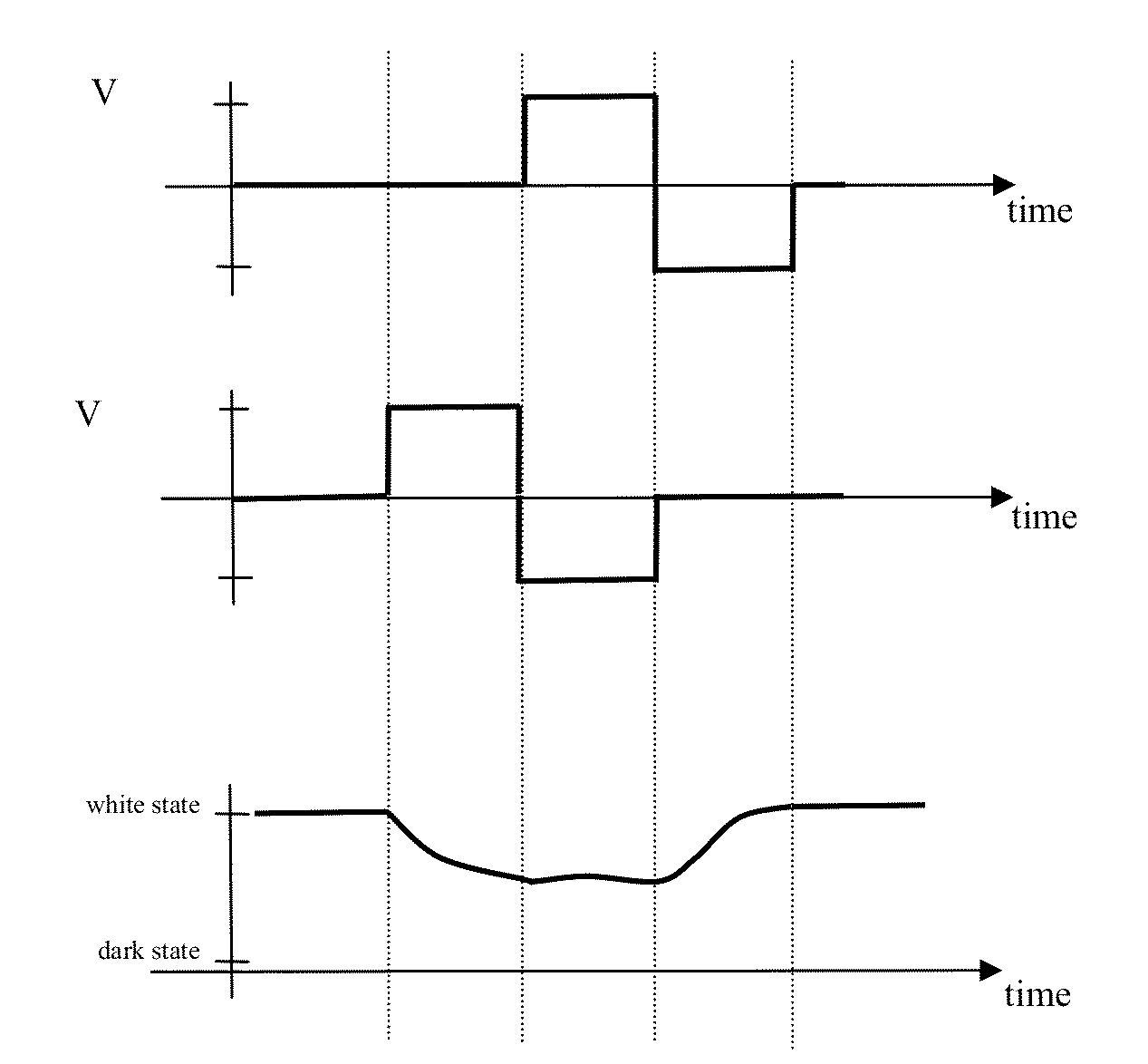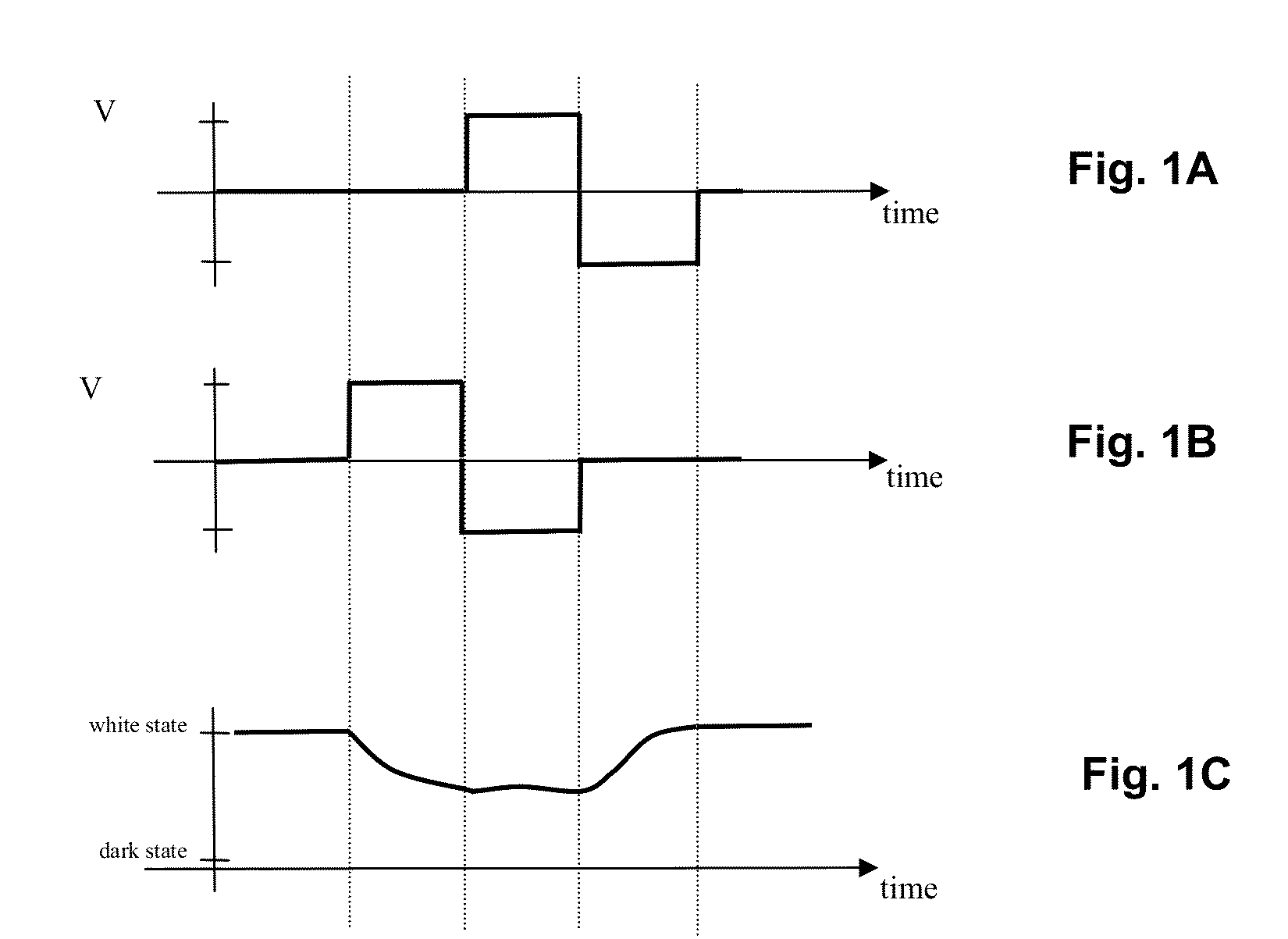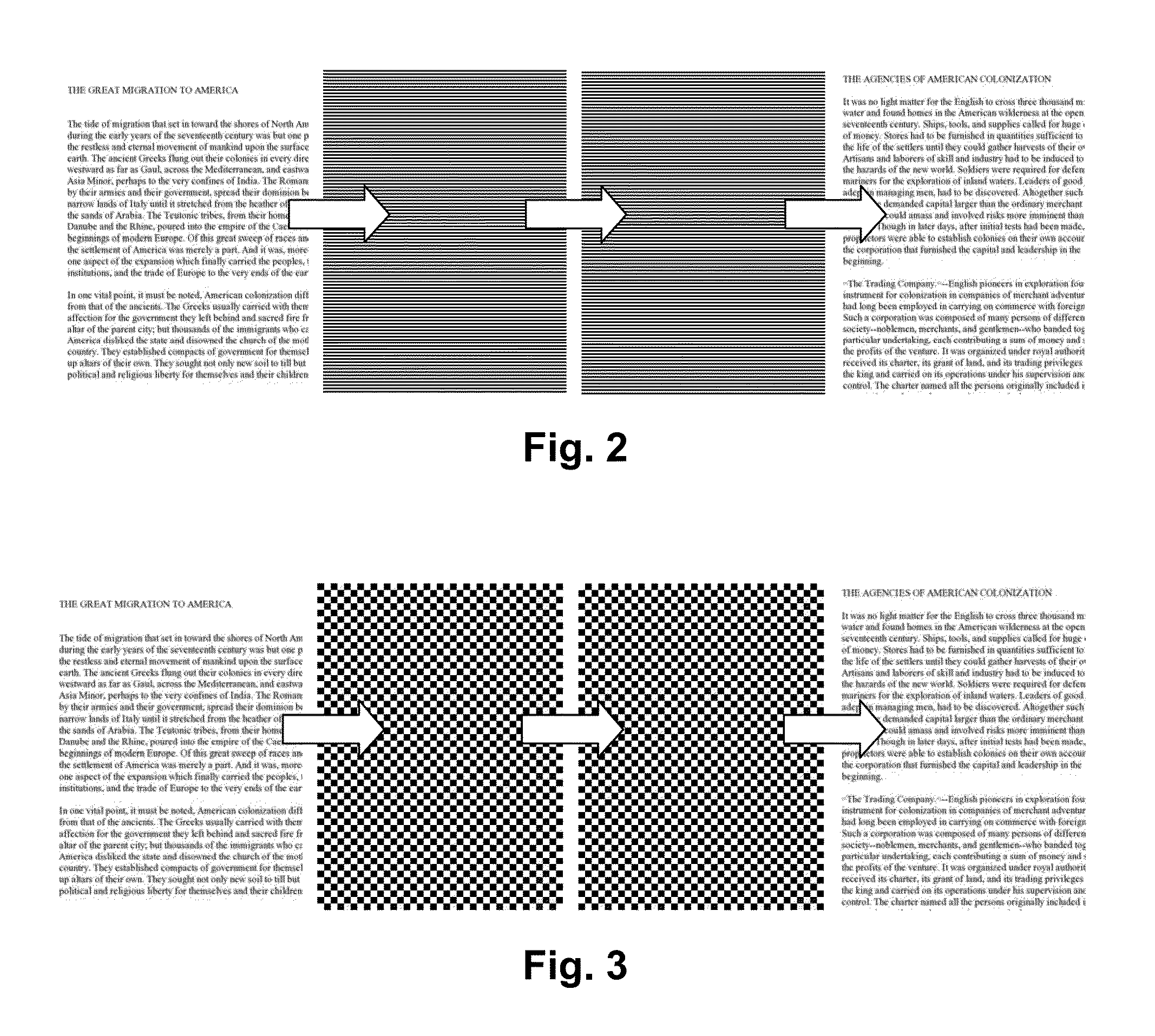Methods for driving electro-optic displays
a technology of electro-optic displays and displays, applied in the direction of electric digital data processing, instruments, computing, etc., can solve the problems of preventing their widespread use, inadequate service life of these displays, gas-based electrophoretic media being susceptible to the same types of problems, etc., to reduce or eliminate edge artifacts, reduce the visibility of edge artifacts, and fast display switching
- Summary
- Abstract
- Description
- Claims
- Application Information
AI Technical Summary
Benefits of technology
Problems solved by technology
Method used
Image
Examples
Embodiment Construction
[0074]It will be apparent from the foregoing that the present invention provides a plurality of discrete inventions relating to driving electro-optic displays and apparatus for use in such methods. These various inventions will be described separately below, but it will be appreciated that a single display may incorporate more than one of these inventions. For example, it will readily be apparent that a single display could make use of the selective general update and straight edge extra pixels drive scheme methods of the present invention and use the arbitrary region assignment controller of the invention.
[0075]Part A: Selective General Update Method of the Invention
[0076]As explained above, the selective general update (SGU) method of the invention is intended for use in an electro-optic display having a plurality of pixels. The method makes use of a first drive scheme, in which all pixels are driven at each transition, and a second drive scheme, in which pixels undergoing some tr...
PUM
 Login to View More
Login to View More Abstract
Description
Claims
Application Information
 Login to View More
Login to View More - R&D
- Intellectual Property
- Life Sciences
- Materials
- Tech Scout
- Unparalleled Data Quality
- Higher Quality Content
- 60% Fewer Hallucinations
Browse by: Latest US Patents, China's latest patents, Technical Efficacy Thesaurus, Application Domain, Technology Topic, Popular Technical Reports.
© 2025 PatSnap. All rights reserved.Legal|Privacy policy|Modern Slavery Act Transparency Statement|Sitemap|About US| Contact US: help@patsnap.com



